If you buy via any of our links, there will be no additional cost to you, and we will receive a tiny commission. More information is available on our Affiliate Disclosure page.
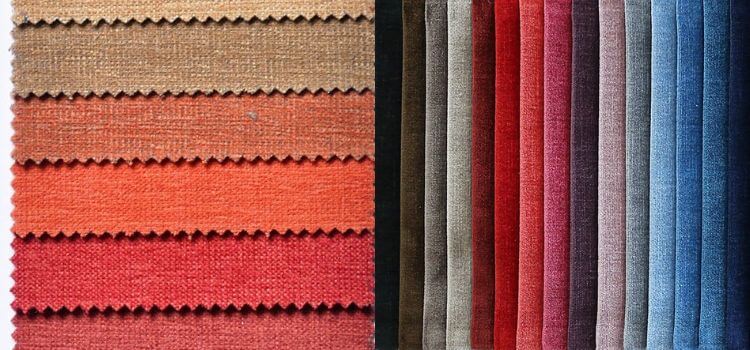
The Best Fabric For Travel
The Best Fabric for Travel seamlessly blends comfort and durability, ensuring a luxurious experience wherever your adventures take you.
Traveling may be a fantastic experience, allowing you to discover new countries, cultures, and cuisines. Whether you’re a seasoned traveler or starting on your first excursion, comfort is essential. The fabric you choose for your travel clothes is an often-overlooked issue that has a significant impact on comfort.
In this article, we’ll look at fabrics and how they affect your comfort while traveling. We’ll look at why fabric selection is important, how different textiles impact your convenience, and the primary purpose of this guide: to provide you with the knowledge you need to make informed judgments when choosing the proper materials for your travel clothing.
By the end, you’ll know how to put together a travel wardrobe that blends elegance and comfort, assuring a pleasurable voyage wherever you go.
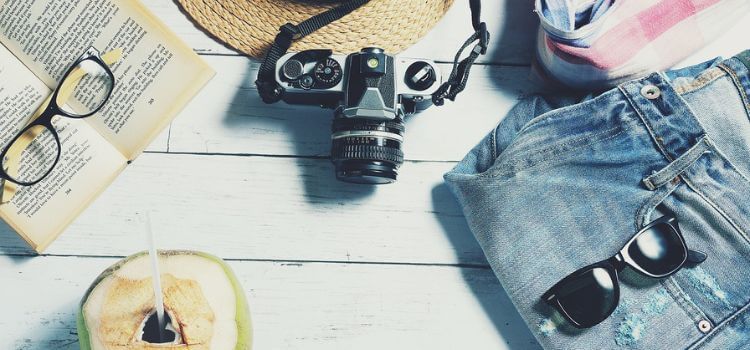
Fabric Requirements for Travel Wear
Fabrics for travel apparel must fulfill specific requirements to provide comfort during the voyage. To begin with, textiles should be breathable in order to promote ventilation and minimize overheating, particularly during lengthy flights or excursions.
They should also be lightweight to reduce the load on the traveler and promote simple packing.
Another important consideration is durability since travel clothing generally experiences severe wear and tear during excursions.
Fabrics should be able to tolerate a variety of situations and retain their integrity even after repeated washing. Furthermore, the material should be elastic and flexible to allow for flexibility of movement, which is essential for energetic tourists seeing new places.
How should Fabrics Interact for Comfortable Travel Wear?
Breathability:
Fabrics should enable air to flow and drain moisture away from the body, minimizing overheating and fostering a cool, dry sensation, especially when worn for extended periods or in hot areas.
Weightless:
To lower the overall weight of your luggage and ensure flexibility of mobility throughout your vacation, travel apparel should be constructed of lightweight fabrics.
Durability:
Fabrics should be long-lasting and able to endure the hardships of travel, such as repeated packing and unpacking and exposure to a variety of conditions.
Flexibility and elasticity:
The fabric should be flexible and stretchy to allow for flexibility of movement and to accommodate varied activities, such as sitting for lengthy periods during flights or indulging in vigorous sports.
Resistance to wrinkles:
Fabrics that resist wrinkles and creases assist in keeping a tidy and professional appearance even when packed in a suitcase.
Rapid drying:
Quick-drying fabrics are ideal for on-the-go travelers, allowing you to wash and air-dry your items easily throughout your vacation.
Resistance to Odors:
Fabrics with antibacterial or odor-resistant characteristics aid in the management of unwanted odors, which is especially significant during lengthy travel or when laundry facilities are restricted.
UV Shielding:
UV-protective fabrics are vital, especially for outdoor activities or areas with high sun exposure, to protect your skin from damaging UV radiation.
By prioritizing comfort and utility when selecting textiles for travel apparel, you may ensure a comfortable and joyful travel experience.
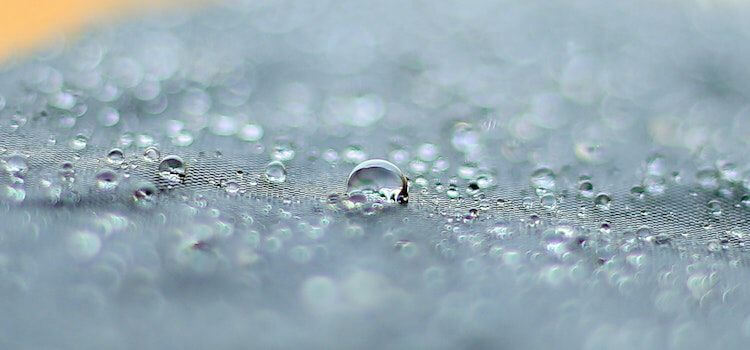
How do Fabrics Handle Moisture and Odors During Travel?
Fabrics respond differently to moisture and scents depending on their composition and qualities. Here’s a rundown of how materials handle moisture and odors when traveling:
Fabrics that wick away moisture:
Moisture-wicking textiles, which are frequently comprised of synthetic materials such as polyester or mixes, feature specific threads that draw moisture (sweat) away from the skin and to the fabric’s surface. This helps water to drain faster, keeping the user dry and comfortable.
Fabrics that breathe:
Breathable textiles feature an open weave or other qualities that allow air to easily flow, assisting in moisture evaporation and decreasing sweat accumulation. Cotton and linen, for example, are noted for their breathability.
Fabrics that dry quickly:
Quick-drying fabrics allow moisture to dissipate quickly, making them excellent for travel, especially when washing and drying garments on the go. Many synthetic textiles dry quickly, making them a popular choice among travelers.
Odor-Resistant and Antimicrobial:
Some textiles contain antimicrobial compounds or have natural qualities that impede the growth of germs, which are frequently responsible for smells. This keeps garments fresher for more extended periods and minimizes the need for regular cleaning.
Natural fibers include:
Wool, for example, has inherent moisture-wicking characteristics. Wool can absorb a substantial quantity of moisture without becoming damp, making it ideal for perspiration management when traveling. Furthermore, the thread has some inherent odor resistance.
Fabrics with a hybrid appearance:
Modern textiles frequently blend several materials to maximize the benefits of each. A fabric made of polyester (moisture-wicking) and cotton (breathable), for example, manages moisture well while remaining pleasant and fresh.
Strategy for Layering:
Using a layering approach with moisture-wicking base layers can aid with moisture management. Base layers remove sweat from the body, while outer layers provide moisture protection and insulation.
Understanding how various textiles manage moisture and smell enables travelers to make informed decisions based on their personal needs as well as the expected weather and activities during their vacation.
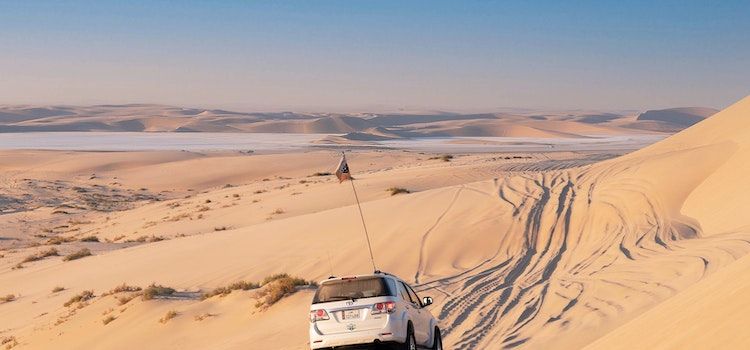
How Does The Weather Influence Travel Fabric Selection?
Climate has a considerable impact on travel fabric selection since various environments present different problems and expectations. Here’s how climate influences travel cloth selection:
Climates that are hot and humid:
Fabric Selection:
In hot and humid situations, lightweight, breathable, and moisture-wicking textiles are essential. Cotton, linen, bamboo, and moisture-wicking synthetics (e.g., polyester, nylon) promote effective moisture evaporation and keep the body cool and dry.
Color Scheme:
Light-colored materials reflect sunlight and can help you stay cool by absorbing less heat.
Cold Weather:
Fabric Selection:
In frigid areas, insulating materials that offer warmth and preserve body heat are crucial. Wool, fleece, down, and synthetic thermal fabrics (e.g., Thinsulate) are great candidates for retaining heat.
Layering:
Layering with several fabric kinds is a classic cold-weather tactic. The combination of moisture-wicking base layers, insulating mid-layers, and weather-resistant upper layers guarantees optimal temperature management and comfort.
Climate Variability:
Fabrics that are versatile:
Versatile materials that combine breathability and warmth are essential in areas with variable weather or changing seasons. Fabrics made from a combination of natural and synthetic fibers can adjust to changing temperatures.
Clothing that converts:
Clothing with convertible characteristics (for example, zip-off pants that morph into shorts) allows you to respond to temperature variations throughout the day.
Windy or exposed environments:
Fabrics Resistant to Wind:
Wind-resistant fabrics, such as nylon and Gore-Tex, are essential in windy or exposed locations. They operate as a wind barrier, keeping the body warm and preventing wind chill.
Climates that are wet:
Fabrics that are water-resistant or waterproof:
Water-resistant or waterproof materials, such as Gore-Tex or polyurethane-coated fabrics, are necessary in damp climates or rainy regions to keep you dry. Furthermore, quick-drying textiles help to avoid discomfort caused by prolonged moisture.
Understanding the temperature of your vacation location and picking appropriate textiles ensures that you remain comfortable and protected, allowing you to thoroughly enjoy your adventure regardless of the weather conditions.
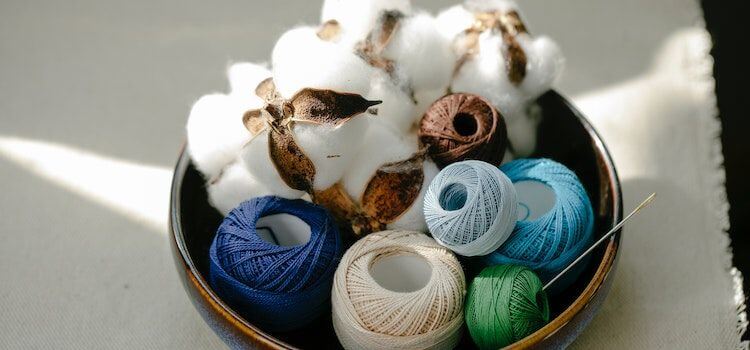
Is Cotton a Popular Choice for Travel Wear?
Cotton is a popular choice for travel clothing for a variety of reasons, but it does have certain downsides.
Cotton has the following advantages for travel wear:
Comfort:
Cotton is well-known for its softness. It’s soft, breathable, and absorbs moisture, making it appropriate for a variety of climates and keeping you comfortable in hot weather.
Multipurpose:
Cotton is a flexible fabric that can be woven into a variety of designs and weights, making it suitable for a wide range of garments. It might be a lightweight cotton shirt or a thicker cotton sweater, depending on your travel demands.
Simple to maintain:
Cotton is generally simple to maintain. It is machine washable and stain resistant, making it ideal for travelers, especially when laundry facilities are limited.
Affordability:
Cotton is a relatively inexpensive fabric, making it accessible to a broad spectrum of travelers and appropriate for those searching for cost-effective solutions.
Cotton’s disadvantages as a travel fabric include:
Wrinkling:
Cotton wrinkles readily, which can be a considerable disadvantage when traveling without an iron or steamer. Wrinkled clothes give the image of being untidy, which may not be appropriate for some travel settings.
Time to Dry:
Cotton takes longer to dry than other materials, especially in damp or cold settings. This might be troublesome if you need to rapidly wash and dry your clothes while traveling.
Moisture Absorption:
While cotton is fantastic for absorbing moisture from the body, when it gets damp or wet, it can feel heavy and unpleasant, requiring longer to dry.
Persistence:
Cotton is less robust than certain synthetic fabrics or mixes, and it can wear out faster, particularly when washed often and exposed to the weather when traveling.
Cotton is a popular choice for travel clothing due to its comfort, adaptability, simplicity of upkeep, and cost.
However, travelers should be aware of its tendency to wrinkle, delayed drying time, potential discomfort while moist, and inferior durability when compared to other fabric alternatives.
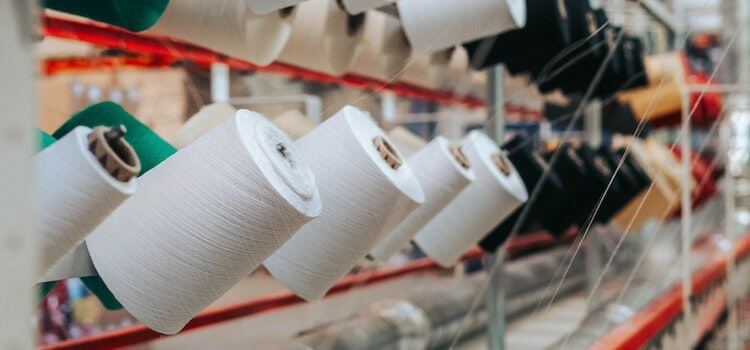
What Makes Polyester Suitable for Travel Wear?
Polyester is a popular choice for travel apparel due to its unique properties that meet the demands of travelers. However, it has its own set of disadvantages.
The Benefits of Polyester for Travel Wear:
Rapid drying:
Polyester is a synthetic fabric that dries fast, making it great for travel when you need to wash and dry your clothing on the go.
Resistance to wrinkles:
Polyester is naturally more wrinkle-resistant than natural fabrics such as cotton. This is useful for those who need access to ironing facilities.
Effectiveness:
Polyester is a long-lasting fabric that can survive repeated usage and resist wear, making it ideal for the demands of travel.
Lightweight:
Polyester is a lightweight fabric, making it ideal for travelers who want to pack light and minimize the total weight of their luggage.
Moisture-Wicking:
Polyester has moisture-wicking characteristics, allowing sweat to be drawn away from the body and evaporated, keeping the user dry and comfortable.
Flexibility:
Polyester may be used with different materials to improve certain qualities. Polyester-cotton mixes, for example, can provide a compromise between the softness of cotton and the durability of polyester.
Polyester has the following drawbacks for travel wear:
Breathability:
Polyester is less breathable than natural fabrics such as cotton. In hot and humid areas, it may trap heat and moisture against the skin, potentially causing pain.
Retention of Odor:
Polyester has a higher odor retention rate than natural fabrics, which might be an issue during lengthy travel without regular access to laundry facilities.
Concerns about the environment:
Polyester is a synthetic fabric derived from petroleum, making it less eco-friendly than natural fibers. Its manufacturing and disposal might have a harmful influence on the environment.
Static electricity:
Polyester may produce static electricity, causing garments to stick to the body or attract dust and lint, which can be bothersome for travelers.
Polyester is famous for travel clothing because it is quick-drying, wrinkle-resistant, robust, lightweight, and moisture-wicking.
Travelers should, however, consider its probable lack of breathability, odor retention, environmental effect, and tendency to create static electricity.
When selecting polyester for travel apparel, it is critical to balance these aspects based on travel demands and destination circumstances.
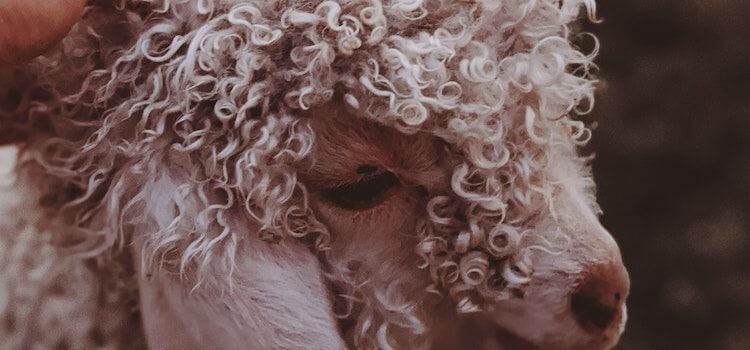
What are the Benefits of Merino Wool for Travel Clothing?
Merino wool is often recognized as a good choice for travel clothing due to its distinct qualities that cater to the demands of travelers. However, there are numerous myths around it.
Merino Wool Benefits for Travel Wear:
Temperature Control:
Merino wool has inherent temperature-regulating characteristics that are second to none. It provides insulation by trapping air inside its fibers and keeping you warm in cold weather and cool in hot weather.
Moisture Control:
Merino wool can absorb a lot of moisture (up to 30% of its weight) without feeling wet. It wicks sweat away from the body, keeping you dry and comfortable.
Resistance to Odors:
Merino wool is naturally anti-bacterial, so it prevents odors even after extended usage. This is a significant advantage for travelers who may need more regular access to laundry facilities.
Resistance to wrinkles:
Merino wool has inherent elasticity that allows it to hold its form and prevent wrinkles, making it ideal for travel without the need for regular ironing or steaming.
Diversification:
Merino wool is suitable for a wide variety of temperatures and activities. It comes in a variety of weights, ranging from ultra-light for warm areas to heavier weights for colder climates, allowing adaptability for a variety of travel needs.
Relaxation and softness:
Merino wool fibers are finer and softer than typical wool, making them more pleasant to wear and less prone to irritating the skin.
Strength:
Merino wool, despite its softness, is surprisingly robust and can resist the rigors of travel and regular wear.
Merino Wool Misconceptions:
It’s scratchy:
This needs to be clarified. Merino wool is smooth and scratchy, especially in the finer grades used for garments. Most people, especially those with sensitive skin, tolerate it well.
High Requirements:
Some individuals feel that Merino wool needs particular treatment. While it is true that you must follow care guidelines to keep its characteristics, it is typically simple to care for and maybe machine-washed and dried.
Only in the winter:
Merino wool comes in a variety of weights, making it suited for a wide range of temperatures. It’s not just for cold weather; lower weights are ideal for warmer areas as well.
Expensive:
While Merino wool is more expensive than other synthetic textiles or typical thread, many travelers believe it is worth the expense because of its advantages, longevity, and adaptability.
Merino wool excels in temperature regulation, moisture management, odor resistance, wrinkle resistance, adaptability, comfort, and durability, making it an excellent choice for travel apparel. Overcoming myths about itching, high care, seasonal use, and cost will help travelers fully understand the benefits of Merino wool for their journeys.

How do Moisture-Wicking Fabrics Enhance Comfort During Travel?
Moisture-wicking materials are intended to improve travel comfort by effectively wicking moisture and perspiration away from the body, keeping the user dry and comfortable. These textiles are essential for controlling body temperature, minimizing chafing, and preventing discomfort caused by excess moisture.
Moisture-wicking fabrics improve comfort by:
Moisture Control:
Moisture-wicking textiles feature special fibers and weaves that draw moisture (sweat) away from the skin and onto the fabric’s surface. This moisture is then distributed across a broader surface area, allowing it to drain more rapidly and keep the body dry and cool.
Temperature Control:
These textiles assist in regulating body temperature by efficiently wicking away perspiration, keeping the wearer from feeling overly hot or cold. This is especially crucial during strenuous activity or when the weather changes.
Chafing is lessened:
Chafing, inflammation, and pain can result from excessive moisture on the skin. Moisture-wicking textiles lessen this danger by reducing skin contact with wet fabric, resulting in a smoother and more pleasant experience.
Rapid drying:
Moisture-wicking textiles dry fast due to their ability to transport moisture to the fabric’s surface. This is advantageous for travelers, especially when washing clothing on the road, because the garments can be ready for use in a short time.
Better Odor Control:
Moisture-wicking textiles assist in limiting the growth of odor-causing germs by keeping the skin dry, resulting in cleaner clothing for extended periods.
Moisture-wicking fabrics include:
Polyester:
Polyester is a popular moisture-wicking fabric that is well-known for its quick-drying characteristics and moisture control. It’s commonly seen in athletics, activewear, and travel apparel.
Nylon:
Another synthetic fabric that is frequently combined with other materials to generate moisture-wicking qualities is nylon. It’s challenging and lightweight, making it ideal for outdoor and sports use.
Merino Wool:
Merino wool, a natural fiber, is naturally moisture-wicking. It can absorb a substantial quantity of moisture while remaining dry to the touch, making it a perfect choice for a variety of vacation activities.
Bamboo Fabric:
Bamboo fabric is manufactured from bamboo pulp and has similar moisture-wicking characteristics as polyester. It’s soft and breathable, and it’s commonly seen in athletic and vacation gear.
Fabrics made of microfiber:
Microfiber fabrics, which are often comprised of polyester or a polyester/nylon combination, are intended to effectively drain moisture away from the body. They’re typically seen in athletics, underwear, and travel clothing.
Moisture-wicking materials improve travel comfort by controlling moisture effectively, regulating body temperature, avoiding chafing, and having quick-drying characteristics.
Polyester, nylon, Merino wool, bamboo cloth, and microfiber textiles are common examples. These textiles are helpful for travelers who want to be comfortable and perform well on their excursions.
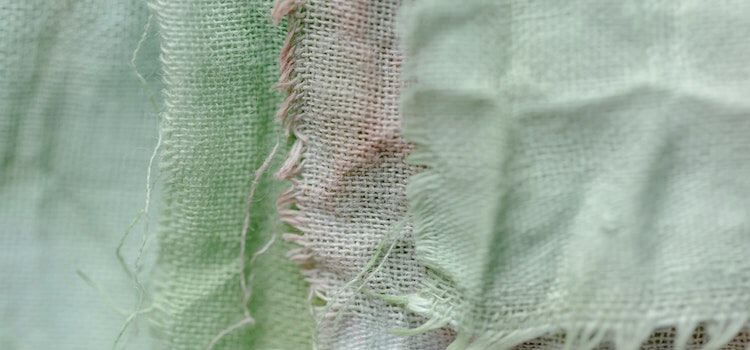
Why is Breathability Essential, and What Fabrics are Suitable for it?
A fabric’s breathing capacity refers to its ability to allow air to travel through, allowing heat and moisture from the body to leave.
It’s a vital comfort factor, especially during strenuous activities or in hot weather.
Breathable textiles are essential for keeping an average body temperature and general wellness.
The significance of breathability:
Temperature Control:
Breathable textiles aid in body temperature regulation by allowing excess heat and moisture to leave, keeping the body incredible in hot weather or during strenuous activity.
Evaporation of Sweat:
Breathable textiles allow perspiration to dissipate rapidly when the body sweats, minimizing discomfort and potential skin concerns caused by retained moisture.
Freshness and comfort:
Breathable materials offer a sense of freshness and comfort by allowing air to circulate about the body, lowering the probability of feeling sweaty or clammy.
Odor Reduction:
Breathable textiles help to reduce the development of germs that generate unpleasant scents by enabling moisture and perspiration to dissipate.
Irritation Prevention:
Breathable textiles, which assist in maintaining a dry and pleasant atmosphere, can lower the risk of skin irritation or rashes, especially for people with sensitive skin.
Fabrics with Excellent Breathability:
Cotton:
Cotton is a natural material that is well-known for its breathability. It allows for good air circulation, making it a popular choice, especially in hot weather.
Linen:
Linen is a naturally breathable fabric manufactured from flax fibers. It has an open weave that allows air to circulate, keeping the body cool and comfortable.
Bamboo Material:
The breathability and moisture-wicking characteristics of bamboo cloth are well recognized. It enables air circulation, making it ideal for hot and humid areas.
Merino Wool:
While warm in cold temperatures, merino wool is amazingly breathable, making it suitable for a broad range of conditions. It allows moisture to escape from the body, keeping it dry and comfortable.
Lyocell (Tencel):
Tencel is a fabric manufactured from wood pulp that is well-known for its breathability and moisture-wicking properties. It’s soft and comfy, making it appropriate for a variety of outfits.
Chambray:
Chambray is a lightweight, breathable cotton fabric with a simple weave that allows for easy airflow. It’s famous for shirts and summer apparel.
Mesh and Mesh Composites:
Mesh fabrics are highly breathable due to their open and porous character and are typically made of polyester or a mix of materials. They’re popular in athletic and activewear.
Breathability is essential for comfort, especially in hot weather or when exercising. Cotton, linen, bamboo, Merino wool, Tencel, chambray, and mesh are excellent breathable materials that are suitable for a wide range of travel and everyday wear needs.
How do Quick-Drying Fabrics Improve the Travel Experience?
Quick-drying textiles provide several benefits that add considerably to a better travel experience, especially for people on the go or in situations where washing facilities are restricted. Here are some examples of how quick-drying materials improve the travel experience:
Laundry Efficiency:
Quick-drying textiles, as the name implies, dry quickly after washing. This efficiency enables travelers to clean their garments and have them ready to wear again in a short period, making on-the-go washing practical and hassle-free.
Pack lightly:
Because quick-drying textiles dry so quickly, travelers may carry fewer garment items, lowering total luggage weight and space. This is especially useful for people who want to travel with carry-on baggage or reduce the importance of their checked luggage.
Versatility:
A few crucial clothing pieces may be readily re-worn during the journey thanks to quick-drying materials. This adaptability is especially advantageous for tourists traveling between climates or partaking in a variety of activities, allowing them to swiftly alter their attire.
Weather Adaptability:
Fabrics that dry quickly adapt to changing weather conditions. If garments become wet due to rain or severe weather changes, they may be swiftly dried, assuring the traveler’s comfort and safety.
Adventure and active travel:
Quick-drying textiles are beneficial to travelers who participate in outdoor activities, treks, water sports, or adventures. These materials dry quickly after physical activities that generate sweating or exposure to water, offering greater comfort and lowering the risk of pain and chafing.
Odor Reduction:
Moisture-wicking qualities are common in quick-drying textiles, which serve to keep the body dry and reduce the growth of odor-causing germs. This leads to a more refreshing and pleasurable travel experience, especially on more extended travels.
Cost-Efficiency:
Quick-drying materials allow travelers to save money on washing, especially when using laundromats or laundry services. Quick drying minimizes the amount of washing loads needed throughout the vacation, saving both time and money.
Time Management:
Travelers can rapidly refresh their clothing, especially if they need more time or access to washing facilities. Quick-drying textiles let you make better use of your time on the road.
Quick-drying materials enhance the travel experience by allowing for fast laundry, encouraging minimal packing, giving adaptability, responding to changing weather, boosting comfort during physical activities, decreasing smells, being cost-effective, and saving time. These advantages lead to a more pleasurable and convenient travel experience.
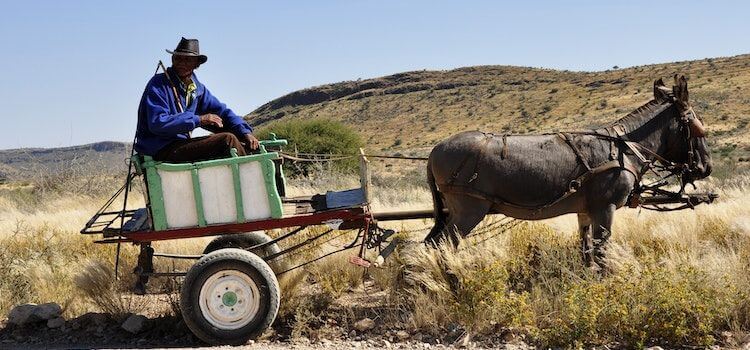
What Fabrics Work Best for Hot Climate Travel?
When traveling to hot areas, choosing the proper textiles is critical for comfort and remaining relaxed. Here are several fabrics that are suitable for hot climate travel, as well as the attributes that travelers should look for:
Linen:
Linen is very breathable and lightweight, making it an excellent choice for hot weather. It features an open weave that allows air to circulate and wicks moisture away from the body. Linen’s relaxed and natural wrinkled appearance is a benefit since it reduces the requirement for proper ironing.
Cotton:
Cotton, especially in its finest form, is a popular option for hot weather. Choose cotton with a loose weave or seersucker fabric to improve ventilation. Cotton absorbs moisture and feels good on the skin.
Bamboo Material:
Bamboo fabric is soft, breathable, and moisture-wicking, making it an excellent choice for hot weather. It contains natural antibacterial qualities that aid in the control of smells.
Lyocell (Tencel):
Tencel is a wood pulp fiber that is noted for its breathability, moisture-wicking properties, and silky-smooth texture. It’s light and drapes nicely, making it ideal for hot weather.
Moisture-Wicking Synthetic Fabrics:
Perspiration-wicking fabrics, such as polyester and nylon, are meant to keep you dry by wicking perspiration away from the body and enabling it to dissipate fast. They are frequently utilized in athletic and vacation attire.
Merino Wool:
Lightweight Merino wool performs admirably in hot temperatures. It has moisture-wicking characteristics, regulates temperature, and is odor-resistant. For warmer conditions, choose Merino wool with a lower weight (150-170 GSM).
Fabrics with UV protection:
Some textiles are coated or engineered to provide UV protection, which is especially important in sunny, hot areas to protect the skin from damaging UV radiation. Choose garments with a high UPF (Ultraviolet Protection Factor).
Fabrics that are loose and light:
In hot areas, travelers should wear loose-fitting, lightweight clothes made of any fabric. Loose designs allow for better air circulation and cooling. Wearing light-colored bounces direct sunlight and helps to keep the body cool.
Mesh Panels that Breathe:
Clothing featuring permeable mesh panels or ventilation zones can aid in improving airflow, especially in perspiration-prone regions like the underarms and back.
Undergarments that wick away moisture:
Always wear moisture-wicking undergarments. They are critical in keeping you dry and comfortable, particularly in hot weather.
When traveling to warmer locations, choose lightweight, breathable materials such as linen, cotton, bamboo, Tencel, and lightweight Merino wool. Consider breathability, moisture-wicking properties, UV protection, loose-fitting designs, and the usage of light-colored clothes. These options will help tourists stay comfortable and relaxed in hot and bright weather.
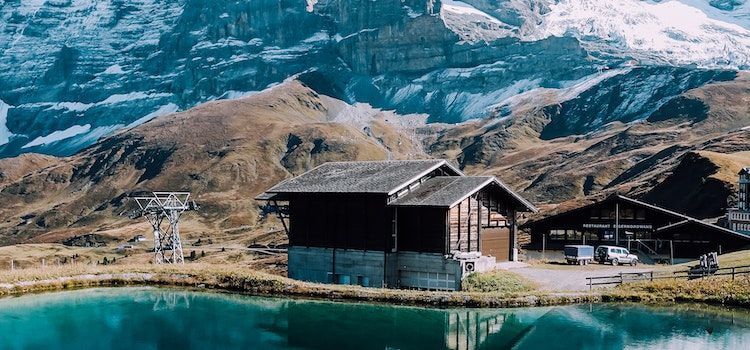
Which Fabrics are Best for Cold-Weather Travel?
Fabrics that provide adequate insulation, retain body heat, and give protection against cold, wind, and moisture are required for hard climate travel. Here are some sumptuous textiles for cold-weather trips and how they keep you warm:
Wool (either Merino or Traditional Wool):
Wool is a fantastic choice for chilly weather. Merino wool, in particular, is prized for its warmth-to-weight ratio, suppleness, and moisture-wicking capabilities. Natural crimps in wool strands trap air, generating insulation and trapping body heat. Wool provides warmth and moisture control even when wet.
Fleece:
Fleece is a synthetic fabric that is noted for providing warmth and insulation. It features a soft, fuzzy surface that retains warm air near the body, allowing it to have heat well. Fleece is also lightweight and breathable, making it a popular choice for layering in chilly weather.
Down:
Down is well-known for its high warmth-to-weight ratio. It is made of duck under feathers and provides excellent insulation by trapping warm air. In chilly climes, down coats and vests are good at keeping you warm.
Synthetic insulation (for example, PrimaLoft and Thinsulate):
Synthetic insulations are intended to emulate the warmth-retaining qualities of down while also providing insulation while wet. They are lightweight and breathable and are frequently used in cold-weather coats and apparel.
Gore-Tex and Other Breathable/Waterproof Fabrics:
Staying dry is vital for warmth in chilly areas. Waterproof and breathable fabrics like Gore-Tex keep moisture out while allowing sweat to escape. These textiles, when combined with insulation layers, provide warmth and protection against cold and damp circumstances.
Cotton (Flannel) Heavyweight:
Heavyweight cotton materials like flannel, while less efficient than wool or synthetic insulation, can give some warmth in pretty cold temperatures. They are frequently used for shirts and as an extra layer in cold-weather attire.
Thermal textiles:
Thermal textiles are exceptionally engineered to keep heat close to the body and hence give warmth. They frequently have a waffle-like structure that improves insulation. Thermal underwear and base layers are commonly made from these textiles.
Faux Fur and Fur:
Fur and imitation fur are utilized as insulation materials. They give protection against chilly winds by creating a warm layer of air near the skin. Fur-lined hoods and jacket trim are typical in cold climates.
Layering:
In chilly areas, layering is vital for staying warm. Combining multiple materials, such as a moisture-wicking base layer, an insulating middle layer (such as fleece or down), and a waterproof upper layer, aids in the regulation of body temperature and the retention of warmth.
Fabrics that provide insulation, trap warm air, and protect against moisture and wind are perfect for cold-climate travel.
Wool, fleece, down, synthetic insulation, waterproof/breathable materials, heavyweight cotton, thermal fabrics, and fur or imitation fur are all excellent alternatives for cold weather travel, depending on the unique climate and activity.
Can You Suggest Versatile Fabrics Suitable for All-Season Travel?
All-season materials should be adaptable to several temperatures, giving comfort, breathability, and the capacity to layer efficiently. Here are several diverse textiles that are appropriate for all-season travel:
Wool Merino:
Merino wool is a popular option because of its flexibility. It provides warmth in cold weather while being breathable and pleasant in hot heat. It wicks moisture, dries quickly, and resists odors.
Cotton Mixtures:
Cotton-blend fabrics with additional fibers such as polyester or spandex provide a combination of comfort, breathability, and stretch. These combinations can function in a range of temperatures.
Blends of nylon and polyester:
Fabrics made from nylon or polyester blended with additional fibers are sturdy, lightweight, and moisture-wicking. They are appropriate for both warm and chilly climes and are frequently used in sportswear.
Lyocell (Tencel):
Tencel is a wood pulp-based fabric that is environmentally friendly. It’s breathable, moisture-wicking, and smooth to the touch. Tencel is appropriate for both hot and cold temperatures.
Bamboo Material:
Bamboo fabric is soft, breathable, and moisture-wicking, making it appropriate for a wide range of temperatures. It is comfortable in both hot and cold weather.
Fabrics made of synthetic microfiber:
Polyester and polyamide microfiber materials are lightweight, quick-drying, and breathable. They are adaptable and may be utilized for a wide range of activities and weather situations.
Chambray:
Chambray is a plain-woven lightweight cotton fabric. Because it is breathable and ideal for mild temperatures, it is suitable for all seasons.
Linen:
Although linen is associated with warmer temperatures, it may be adaptable when combined with different textiles. Linen mixes can provide a breezy and comfortable alternative for all seasons.
Gore-Tex and Other High-Performance Materials:
Gore-Tex, eVent, and other waterproof/breathable textiles give protection from the elements while allowing moisture to escape. They are adaptable to many weather conditions.
Fabrics for Soft Shells:
Softshell textiles provide warmth, breathability, and water resistance. They are frequently utilized in outerwear and give seasonal adaptability.
Consider aspects like breathability, moisture-wicking qualities, playability, and odor resistance when selecting versatile textiles.
Layering different outfits made of these materials will allow you to adjust to changing weather conditions while traveling.
What Fabrics are Best for Travel?
Understand Your Requirements:
Think about the weather and activities you’ll be doing during your trip. Choose textiles based on the anticipated temperature and amount of physical activity.
Versatility should be prioritized:
Choose textiles that can be adapted to varied climates. Merino wool, some cotton mixes, and synthetics may all be worn in a variety of environments.
Examine the breathability and moisture-wicking properties:
Look for textiles that are breathable and moisture-wicking, especially if you are active or traveling in hotter locations. Allowing perspiration and moisture to dissipate improves comfort.
Think about weight and thickness:
Choose fabrics with the right weight and thickness based on your trip intentions. Lightweight materials are suitable for warmer regions, while heavier fabrics are ideal for more excellent conditions.
Look for fabrics that dry quickly:
Choose quick-drying materials first, especially if you want to wash and dry your garments during your vacation. For travelers, quick-drying materials are both practical and efficient.
Determine Durability:
Check the fabric’s durability, especially if you’ll be doing outdoor or rough activities. Materials that can endure wear and tear include ripstop nylon and robust polyester mixes.
Packability and wrinkle resistance should be evaluated:
Fabrics that pack neatly and don’t wrinkle easily are ideal for travel. Avoid crease-prone materials since they may require ironing.
What are The Most Critical Care Guidelines for Various Travel Wear Fabrics?
Wool Merino:
Hand wash in cold water or machine wash on a mild cycle. Allow to dry flat. Direct sunshine and intense heat should be avoided as they might harm the fibers.
Cotton:
Cotton is frequently machine washable. Specific washing instructions may be found on the garment’s care label. Tumble dry on low with cold or warm water.
Polyester and nylon are examples of synthetic fabrics.
The majority of synthetics are machine washable. Use a moderate detergent and cold or warm water. To avoid fabric damage, avoid using high heat when drying.
Bamboo Material:
Wash by hand or machine in cold water on a moderate cycle. Use a gentle detergent. To dry, lay flat, or hang.
Down:
Follow the label’s care directions. Down clothes may generally be machine-cleaned with a mild detergent, but drying should be done carefully on low heat.
Are there Any Recognized Manufacturers Known for Producing High-Quality Travel Apparel Fabrics?
Yes, some well-known companies are recognized for manufacturing high-quality travel apparel made of high-quality fabrics:
Icebreaker:
Icebreaker, well known for its Merino wool goods, offers a diverse assortment of travel gear ideal for a variety of climates and activities.
ExOfficio:
ExOfficio is well-known for its travel-friendly apparel consisting of moisture-wicking and quick-drying materials, making it perfect for adventure and outdoor travel.
Patagonia:
Patagonia provides a wide range of travel clothing manufactured from sustainable and high-performance textiles, with an emphasis on durability and environmental responsibility.
Columbia:
Columbia makes adaptable travel clothing with textiles tailored for various weather situations, such as moisture-wicking and insulated alternatives.
Arc’teryx:
Arc’teryx specializes in technical clothing constructed of high-quality, long-lasting textiles that are appropriate for outdoor and adventure travel.
Smartwool:
Smartwool is well-known for its Merino wool items, which provide warmth, moisture-wicking, and odor resistance for travel in a variety of conditions.
When looking for travel apparel, look into these respected companies known for their high-quality textiles, durability, and adaptability for a variety of travel situations.
Before making a purchase, always examine the product information, fabric content, and care instructions.
Conclusion
Finally, selecting the proper fabric for travel gear is critical to ensuring comfort, adaptability, and compatibility for various climates and activities.
Based on their unique travel demands, travelers should prioritize aspects such as breathability, moisture-wicking qualities, quick-drying capabilities, and durability.
Merino wool, cotton, bamboo, Tencel, nylon, and polyester mixes are ideal fabrics for various weather situations.
Merino wool is notable for its adaptability, offering warmth in cold weather and breathability in hot heat. Cotton is a traditional comfort fabric, while moisture-wicking synthetics like polyester are perfect for active travel.
Understanding the care recommendations for each fabric is critical for preserving its performance and lifetime. Travelers should use the prescribed washing and drying techniques to keep their garments in good condition during their trips.
Quality travel apparel constructed from high-performance textiles is available from reputable companies such as Icebreaker, ExOfficio, Patagonia, Columbia, and Arc’teryx, offering travelers dependable alternatives for their trips.
Travelers may improve their entire trip experience by considering the environment, activities, and intended usage of clothes when picking travel wear textiles.

